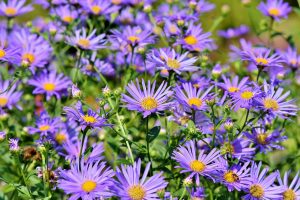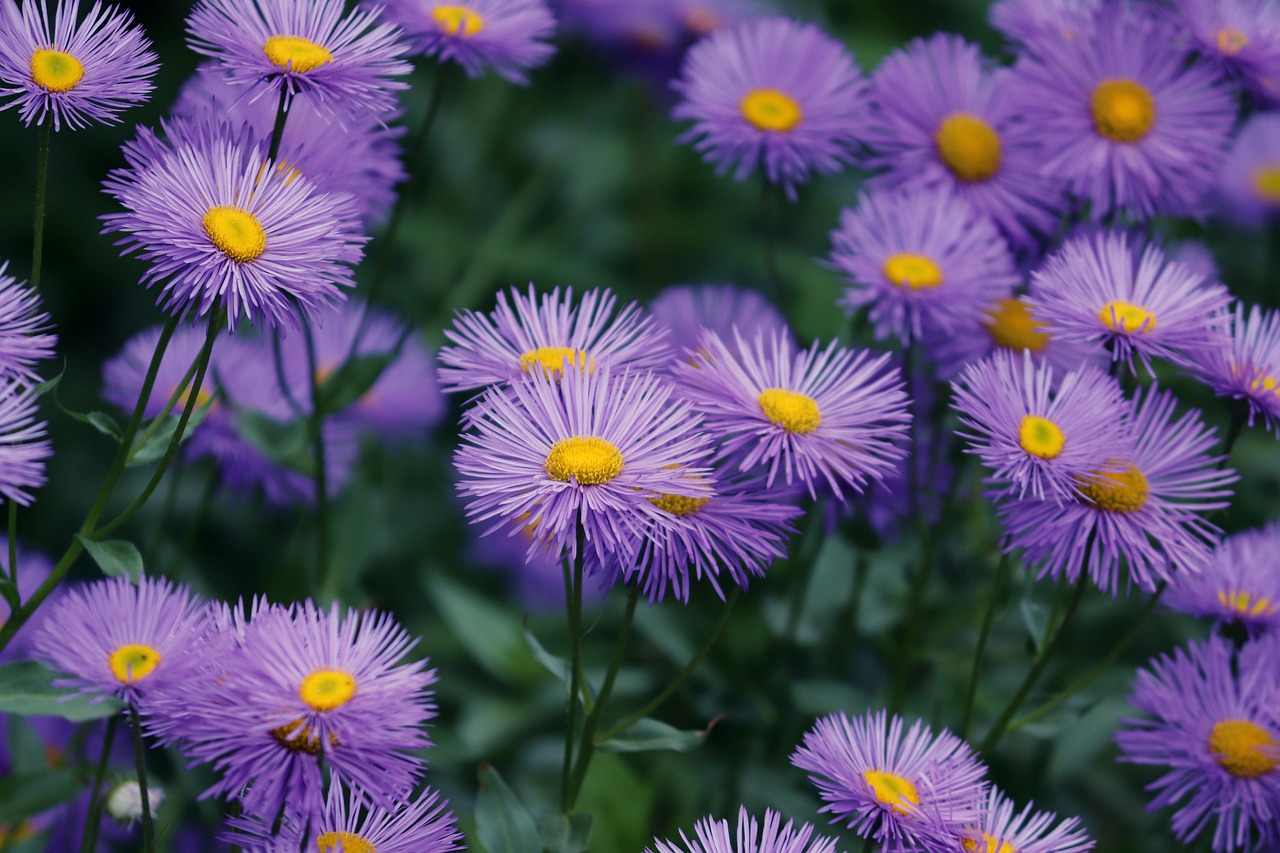Last Updated on April 12, 2024 by Real Men Sow
You need to be aware that asters come in many sizes and flower types if you want to plant them in your garden. There are four species of asters that are commonly found in the UK: frikartii (Aster amellus), frikartii (novae-angliae) and novi-belgii.
Quick Facts About Growing Asters From Seed
These four species share the same characteristics:
- They prefer partial sun to full sun.
- It is important to plant them in a well-draining area, especially if they will be overwintering well. Clay soils can be improved with grit, well-rotted organic matter, and a lot of grit.
- They are perennials, so they will come back year after year.
- They are deciduous and lose all their stems and leaves in winter.

Aster Amellus
This species, often called Italian asters prefers limestone soil that is free-draining. However, it will thrive in partial shade.
They are about 50cm tall and 20cm wide. It forms dense, bushy plants that smother weeds well. They like well-drained soil that is alkaline to neutral.
Most well-known varieties are ‘King George’, ‘Veilchenkonigin’ and Rudolph Goethe’. They have mauve flowers. ‘Rudolph Goethe’ and ‘Violet Queen’ have violet flowers while ‘Sonia’ has pinkish flowers. All varieties have yellow centers. Aster Amellus cut flowers that last for about one week. These flowers are available in August, and they last into September/October.
Aster Frikartii
Monch, a frikartii type, is perhaps the most well-known of all these asters. It is highly recommended that you choose this variety. They can be used in all soil types, provided that drainage is good.
The height of the variety is approximately 75cm/30in. It has a spread of 45cm/18in. This variety may sometimes need to be staked, but it’s not always. It flowers from July through October, and makes a great cut flower that will last for a week.
Aster Novae-Angliae
These are also known as New England asters and are far superior to their close-up, the Michaelmas Daisy. This is the species with the flowers that close at night, although modern varieties do not.
This variety is tall at about 75 cm / 30in. It has a spread of 60 cm / 24in. It is a dense, bushy plant that smothers weeds well. Aster novae angliae’s most popular varieties are ‘Violetta’, which has violet-colored flowers and ‘Purple Dome’, which is shorter at 55cm. ‘Barr’s Pink’, an older variety with rose-pink flowers, and ‘Harrington’s Pink’, which also has pink flowers.
Lower leaves are more likely to fall off too early, leaving behind unattractive stalks. Foreground planting can help mask this. This variety is not meant to be cut flowers.
Aster Novi-Belgii
This isn’t a specific species of aster, but a mix of different hybrids of all sizes and colours. It is important to understand that mildew can be a problem with this group of asters and regular spraying will be necessary. They are not suitable for amateur gardeners.
Grow Asters from seed or plants?
Aster seeds can be purchased in the UK, but they are only for perennials and not annual plants. These are best purchased as pot-grown plants.
Once you have established an aster plant, it is easy to take a cut. You don’t need to worry about cutting, just look at the bottom of the plant and choose a side shoot. Gently tease the plant and place it in a pot or directly in the ground. Late spring is the best time to plant.
Another option is to take an existing clump that has been around for three years or more and divide it with a spade. Plant them wherever you wish them to grow. To reduce congestion, this second method should be used when plants reach five years of age.
Taking Care of Asters
Watering
Asters don’t need watering under normal circumstances. In fact, too much water can lead to mildew infections. A thorough soak with water in drought conditions should last them for two weeks.
Feeding
Although it is not necessary, a twice-yearly application of a long-lasting fertilizer such as blood or fish will improve the flower’s colour. It is fine to sprinkle a few drops of fertilizer around each plant, and then gently work it into the soil.
Deadheading Flowers
Cut off flower heads after they have fallen to the ground in order to get the longest period of flowering from your asters. This will extend the flowering period and ensure that the plants look their best during the flowering season.


